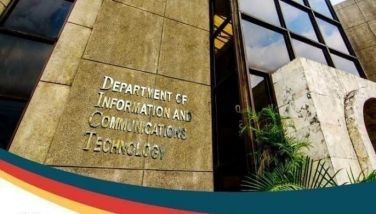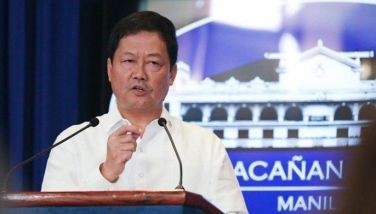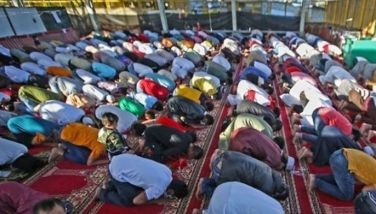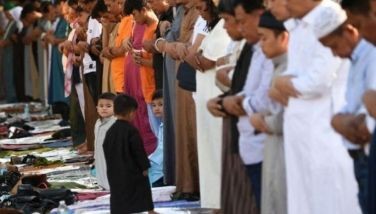Resisting and surviving martial law

I have always associated the month of September with the anniversary of the declaration of martial law. The First Quarter Storm (FQS) which started in 1970 was a period of heightened student activism. My own personal life was deeply affected by the events before martial law and afterwards. I was familiar with student activism because I was president of the La Salle Student Council only a couple of years before the FQS. After I graduated from the Asian Institute of Management in 1970, I worked in ABS-CBN Broadcasting Corporation handling special assignments as assistant to the president. These assignments ranged from doing financial analysis and projections to being the field coordinator for the Bilang ng Bayan, which was the equivalent of the Operation Quick Count for the 1970 and 1971 elections.
One of the most memorable assignments I had was when the then general manager of ABS-CBN assigned me as the liaison between the student activists and the network. One project I remember was when the activists were given some airtime for a TV documentary program that they would handle. I had a chance to meet many of the top officers of the student activist organizations and some of them were declared wanted persons.
One of the most unforgettable persons I met was then editor in chief of the Philippine Collegian. When I read the book “Serve” published by Bughaw and edited by Jo-Ann Q. Maglipon, the collection of 19 stories brought back my own personal memories of the martial law era. Maglipon, in her Introduction, wrote that the stories were written by “fearless college editors from 1969-1972” and how the course of their young lives were profoundly changed by martial law. They belonged to the College Editors Guild of the Philippines (CEGP).
In the prologue to the book by the well-known writer and STAR columnist Butch Dalisay, he wrote: “The pieces in this book cover a wide range of themes and treatments even as they all emanate from the sheer experience of resistance to dictatorship then in our role as editors and writers for the campus press.”
Each author also told a story of surviving and adapting to life after martial law. Dalisay narrated that some remained journalists all their working lives, like Jaime FlorCruz, Sol Juvida, Thelma Sioson and Jo-Ann Q. Maglipon. There were others who joined government service like Sonny Coloma, Manuel Dayrit, Eduardo Gonzalez, Diwa Gunigundo and Judy Taguiwalo. There were others who became either entrepreneurs or joined the corporate world like Angie Castillo, Jones Campos, Mercy Corrales and Senen Glorioso. Then there were Elso Cabangon, Diwa Guinigundo and Bob Corrales about whose journey Dalisay wrote as “reencountering their spirituality and embracing their faith as their personal advocacy.”
Another FQS veteran, Alexander Aquino, moved overseas. Then there were the few who chose to pursue their activism in the academic world like Derly Hernandez, Eduardo Gonzalez, Judy Taguiwalo, Rey Vea and Butch Dalisay.
Chito Sta. Romana, one of the best known student activists, eventually became a journalist and recently, was Philippine ambassador to China before he passed away in April 2022.
The book is a compilation of very readable stories as the 19 co-authors all shared a background in journalism. There were a few stories of special interest to me due to very personal reasons.
Chito Sta. Romana is my brother-in-law since I am married to his sister Neni. However, I met Chito because he was a freshman in De La Salle College when I was in my senior year. Chito’s story in the book is not done in an autobiographical style, instead in a Q-and-A interview by some of his colleagues in the CEGP. He narrated details of his life which are now well known, that included his exile in China for many years, then his transition to being a journalist first for the Washington Post, then Beijing chief correspondent for ABC News. Finally, he talked of his appointment as Philippine ambassador to China in December 2016.
The other interesting parts of the interview were his answers to how he became political and his family background. Chito came from landed families in Nueva Ecija and went to De La Salle from second grade to college. He was a typical middle class man with a highly conservative background. His political awakening is a narrative about his education in La Salle which roused him and began his involvement in the nationalist movement, especially when he was elected as De La Salle Student Council president.
Another interesting account is Thelma Sioson’s “A Colegiala Speaks: Fighting a Most Seductive Dictatorship with Another Beguiling Ideology.”
Her story of her days with her campus newspaper, The Theresian Register, and in the Student Council of St. Theresa’s mirrors the life experiences of collegialas in the many colleges run by nuns at that time.
The book’s complete title is “SERVE: the people, the economy, government, children, environment, press freedom, academe, a supreme being, women and the country.” It is a sequel to an earlier book, “Not on our Watch: Martial Law Really Happened. We Were There.”
The book includes artwork that depicts martial law images. Among them are “Kumprador” of Pablo Baens Santos which depicts the country’s 1 percent exploiting the 99 percent of the population and Bencab’s “Brown Brothers’ Burden” which depicts the image of the white colonial master.
Today, on the 51st anniversary of martial law, these stories are reminders that these brave and once-young writers launched a struggle that should be continued by future generations.
* * *
Email: elfrencruz@gmail.com
- Latest
- Trending



























